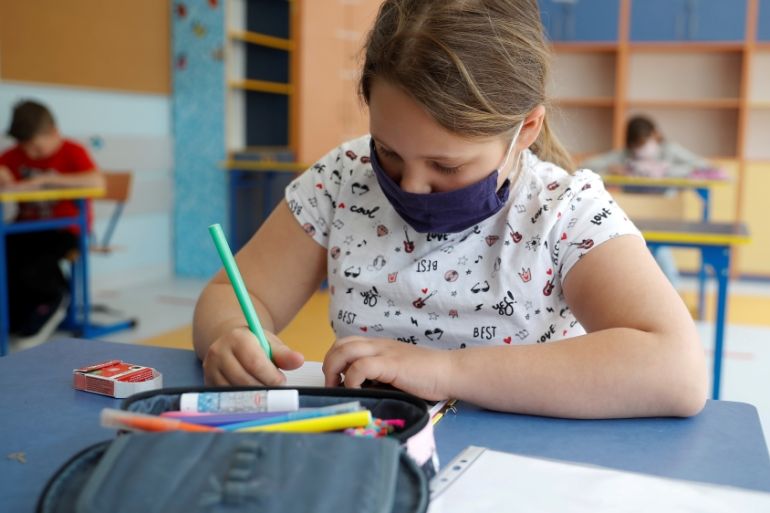Learning to learn during a pandemic
We do not fully know the extent of children’s role in the spread of COVID-19. However, we do know that the global disruption of education poses a greater threat to most children than the virus itself.

The COVID-19 pandemic has sparked the largest disruption of education in history, exacerbating existing inequalities in education access. According to UNESCO, around 1.6 billion learners have been affected by school closures implemented worldwide in an effort to stop the spread of the virus. The negative consequences of school closures are numerous.
Decades of progress in education are at risk of being lost, with severe consequences for all learners, particularly for girls. Experience from former crises entailing school closures tells us that girls may, to a greater extent, face pressure to substitute education for domestic chores, and are at greater risk of early and forced marriage, early pregnancies, as well as sexual violence and abuse.
Keep reading
list of 4 itemsMexico’s teachers seek relief from pandemic-era spike in school robberies
‘A bad chapter’: Tracing the origins of Ecuador’s rise in gang violence
Why is the US economy so resilient?
Often identified as the key to unlock progress on all of the United Nations’ Sustainable Development Goals, quality education can promote gender equality, inclusive economic growth and better health outcomes. While undoubtedly transformative when provided, the absence of education has detrimental effects beyond the lack of formal learning for the individual. Without education, we risk being further off-track in our efforts to achieve the Sustainable Development Goals.
Across the globe, governments, multilateral agencies and civil society organisations have strived to retain access to education through the provision of distance learning. Regrettably, those digital solutions that offer the greatest learning potential are rarely accessible to the poorest and most marginalised children, such as refugee and internally displaced children. Even low-tech solutions such as TV and radio education, may not be fully available to these groups.
Furthermore, learners with disabilities worldwide also faced barriers to their access to education and were at an educational disadvantage even before the pandemic. The effects of school closures impact them disproportionately, as many distance-learning solutions are not tailored to their needs. According to UNESCO, approaches combining low-tech, no-tech, captioning and sign language alternatives are possible solutions to heighten the inclusion of learners with disabilities.
Echoing this, we can conceive of the crisis as an opportunity to rethink and develop better, more accessible and inclusive education systems and methods. However, we must act quickly.
Inclusive and accessible distance learning can be a good way of keeping students connected to the education system during school closures. This limits the loss of learning and can ease the reintegration process once it is safe for schools to reopen. Because a safe return to school is critical. However, the virtual classroom cannot replace the physical classroom and the presence of teachers and co-students from a long-term perspective.
In a new policy brief, the UN Secretary-General presents key recommendations for mitigating the potentially devastating impact of the COVID-19 pandemic on education. Suppressing the spread of the virus is the single most effective measure for hastening the reopening of educational institutions. It is vital that authorities listen to all concerned parties – including teachers, parents and the students themselves – in order to facilitate an inclusive and safe return to school, for everyone. Coordination with the health community is paramount if schools are to reopen and stay open.
Leaders around the globe now face hard decisions on how to reopen society while avoiding the uncontrolled spread of the disease. I am pleased to see that many countries are making education a priority, including through the controlled and safe reopening of educational institutions and the provision of distance learning opportunities.
In these challenging times, we continue to give particular priority to low-income countries as well as countries affected by crisis and conflict. Norway continues its support for education at a high level. Multilateral institutions such as UNESCO, UNICEF, The Global Partnership for Education and Education Cannot Wait and civil society organisations are all important partners.
However, to ensure a safe return to school for all affected learners, the bulk of finance for education will have to come from domestic resources. Despite a global context in which national budgets and official development assistance will come under increased pressure, it is vital to preserve finance for education.
Education is by nature a long-term endeavour. The benefits of investing in education now will provide the world with qualified health workers, resourceful teachers and well-prepared leaders decades down the road. Education is the key to unlock progress and development – and is vital for the betterment of the individual and our global community. We know that education reduces poverty and exploitation. We know that education increases productivity and leads to higher earnings. We know that a child whose mother can read is far more likely to live a healthy life.
All children, including all girls, must return to school. This is vital for rebuilding economies and societies, and for the freedom of our children.
The views expressed in this article are the author’s own and do not necessarily reflect Al Jazeera’s editorial stance.
